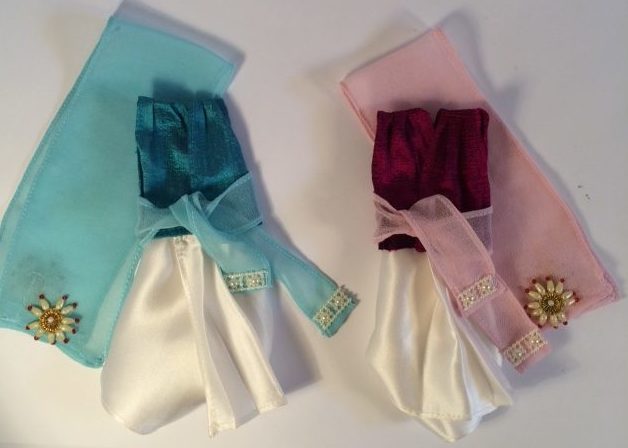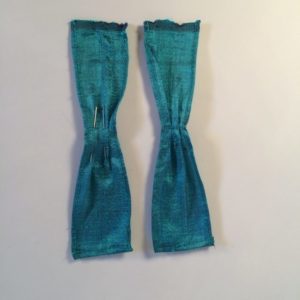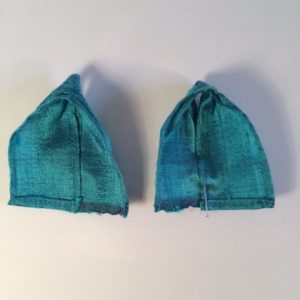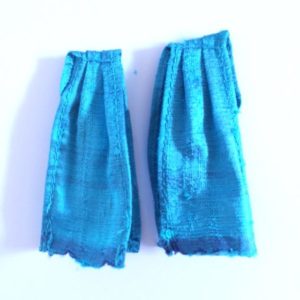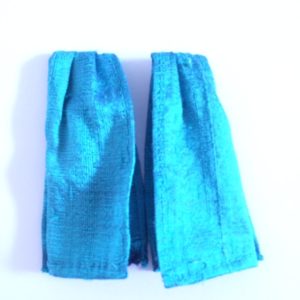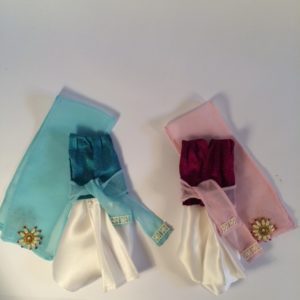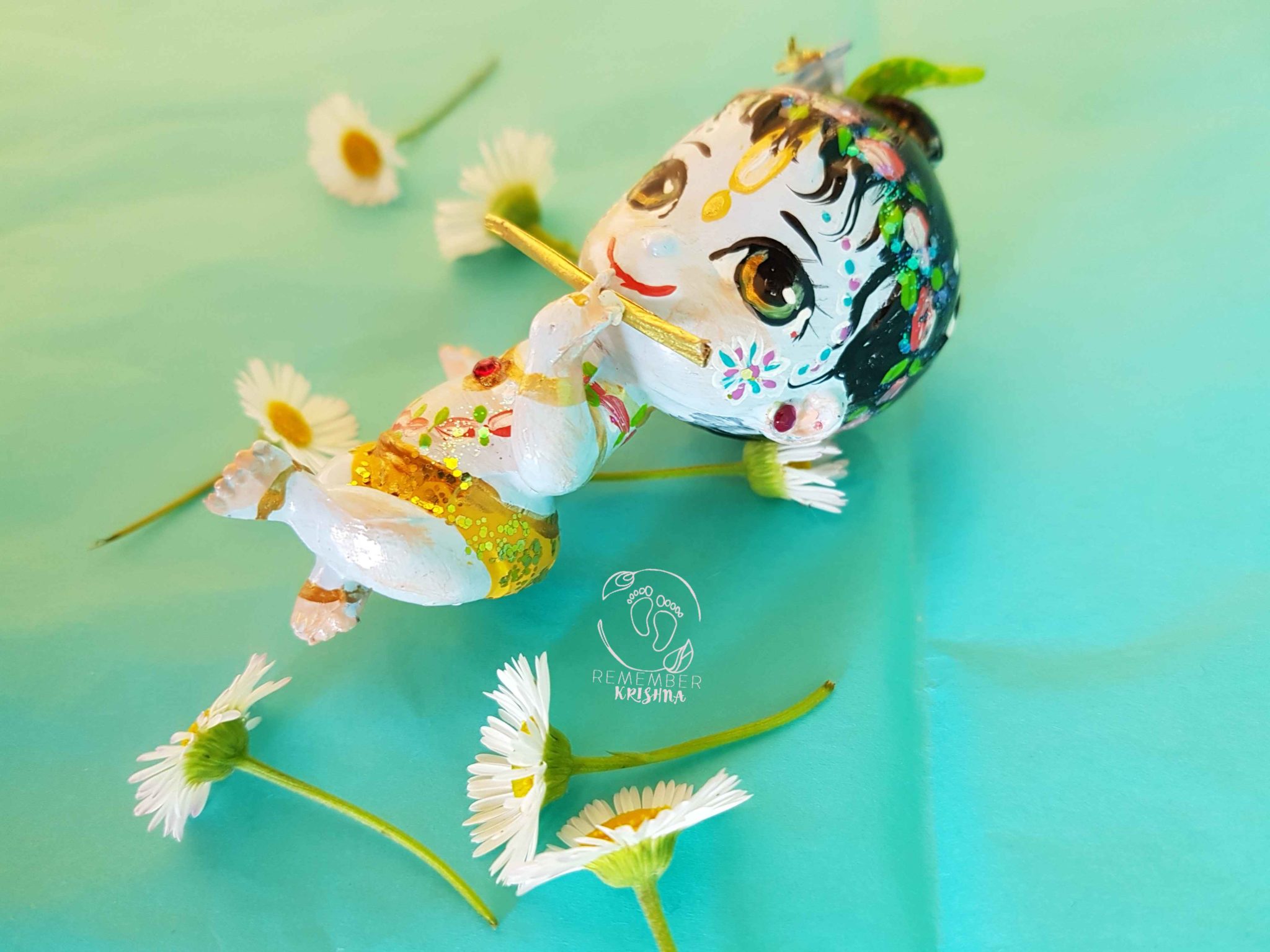
I remember practicing to draw that beautiful blue treasure of our hearts when I was just a little tyke!
In fact I remember the first drawings of some of the most incredible artists of this age (Yep I’m looking at you, Devaki & Yogananda!)
Because we all dote on Krishna we can look fondly on the blue or yellow or green scribble and encourage further attempts.
The thing I find the most encouraging is that, Krishna’s sweetness can be evident even in a sketchy scribble where the arms maybe not exactly proportionate or even correct, but we can see tilak or some effulgence and we have this little piece of remembrance.
While I personally am only a mediocre artist, and am always learning more, it is a great delight to draw and practice on Krishna.
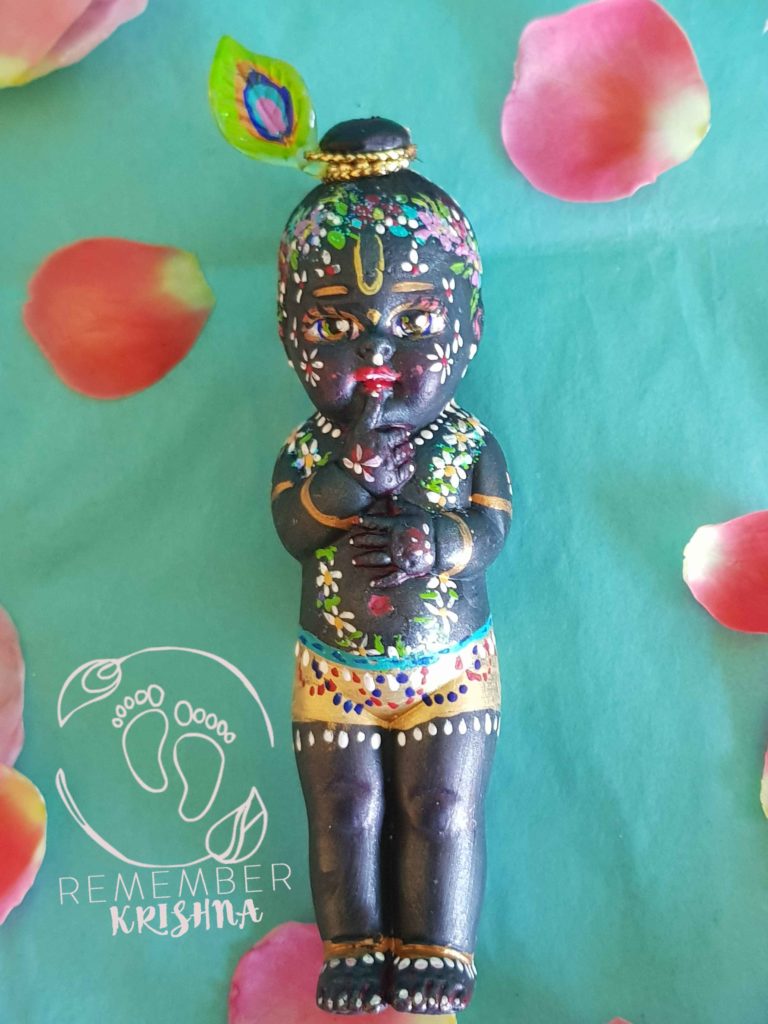 Thankfully many people have enjoyed my Krishna art and of course I am thrilled to be able to sell my Krishna dolls.
Thankfully many people have enjoyed my Krishna art and of course I am thrilled to be able to sell my Krishna dolls.
When I was little our parents encouraged us to create by giving us stories of Krishna, nursery rhymes which had lyrics about Him, and always coloring in activities with Krishna and His transcendental companions. If you remove tv and computer games as a distraction then there’s a lot more time to develop an interest! Interestingly – and this is not at all the point of my post but a fascinating side note – Bill Gates, the genius behind Microsoft computers, does not even allow his kids to own or have devices – citing developing creativity and interests as his parenting reasoning.
So, the beauty of capturing Krishna in art is such that, while we do so we can absorb ourselves in thinking about Him (what does He look like? How does He stand/ what does He wear, what have I heard about Him that I can incorporate into this artwork?).
The beauty for the audience is they also get to enjoy remembering Krishna by gazing upon the Krsna artwork – however inexpertly created. A win win situation!
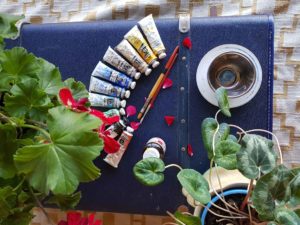 While I work on painting my Krishna dolls, I find it is conducive to listen to a lecture, so my ears are occupied in hearing while my hands are busy. This can be nice, but other great times are when family is gathered or friends are visiting – like someone who knits, always on your lap!
While I work on painting my Krishna dolls, I find it is conducive to listen to a lecture, so my ears are occupied in hearing while my hands are busy. This can be nice, but other great times are when family is gathered or friends are visiting – like someone who knits, always on your lap!
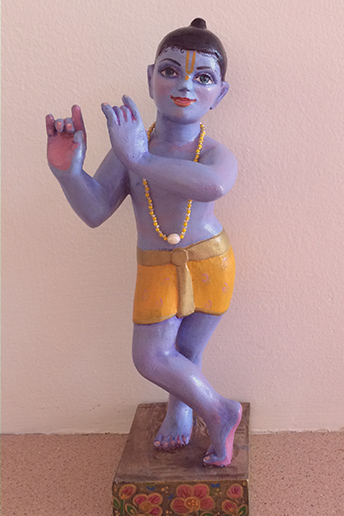
I also ask Krishna for His blessings and assistance before I try and represent Him – most especially before I attempt to paint deities of the Lord, I pay my obeisances and ask Krishna for His help to guide my hand – I need it because I am not very expert, but who can accurately portray the beauty of Krishna without His assistance?
Remembering Krishna’s name, qualities, beauty and pastimes I have some very very favorite and inspiring quotes to share with you to assist you in your own creativity painting Krishna.
Sri Krsna’s complexion is as enchanting as an emerald, a tamala tree, or a group of beautiful dark clouds. He is an ocean of nectarean handsomeness.
He wears yellow garments and a garland of forest flowers. He is decorated with various jewels and He is a great reservoir of the nectar of many transcendental pastimes.
His handsome crown is decorated with many different flowers. His handsome forehead is splendidly decorated with tilaka markings and curling locks of hair.
The playful movements of His raised, dark eyebrows enchant the hearts of the gopis.
The tip of His nose is as handsome as the beak of Garuda, the king of birds.
His charming ears and cheeks are decorated with earrings made of various jewels.
He speaks many charming jokes.
Decorated with a necklace of pearls, the beauty of His neck enchants the residents of the three planetary systems. Decorated with a necklace of pearls and with the Kaustubha gem, which shines like lightning, Krsna’s handsome chest longs to enjoy the company of the beautiful gopis.
Decorated with bracelets and armlets, Krsna’s arms hang down to His knees.
Krsna’s knees are very splendid, charming and handsome.
His charming lotus feet are decorated with jeweled ankle-bells.
Krsna’s feet have the luster of roses, and they are decorated with various auspicious markings, such as the markings of the disc, half-moon, octagon, triangle, barleycorn, sky, parasol, waterpot, conchshell, cow’s footprint, svastika, rod for controlling elephants, lotus flower, bow and jambu fruit.
His reddish toes are decorated with the row of full moons that are His toenails.
Although we have sometimes compared Krsna’s handsomeness to various things, nothing can actually be equal to it.
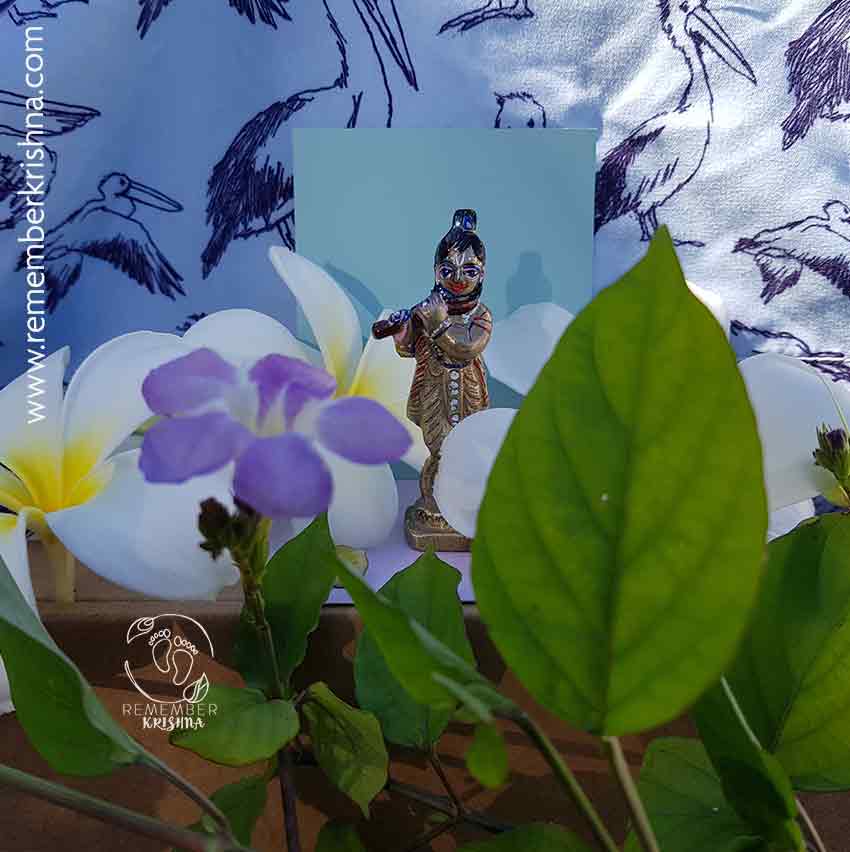
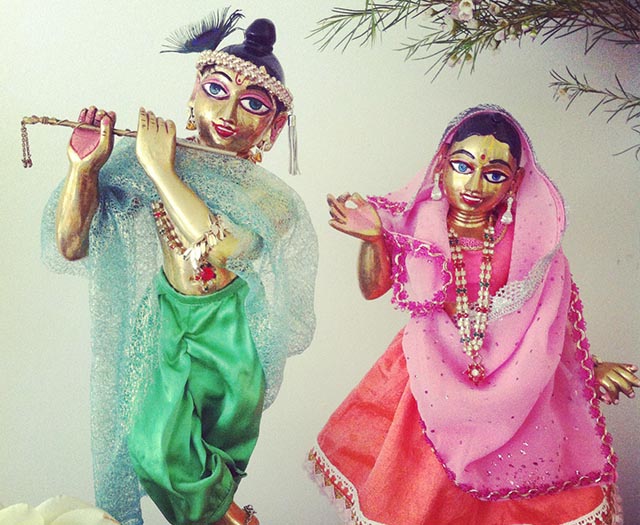
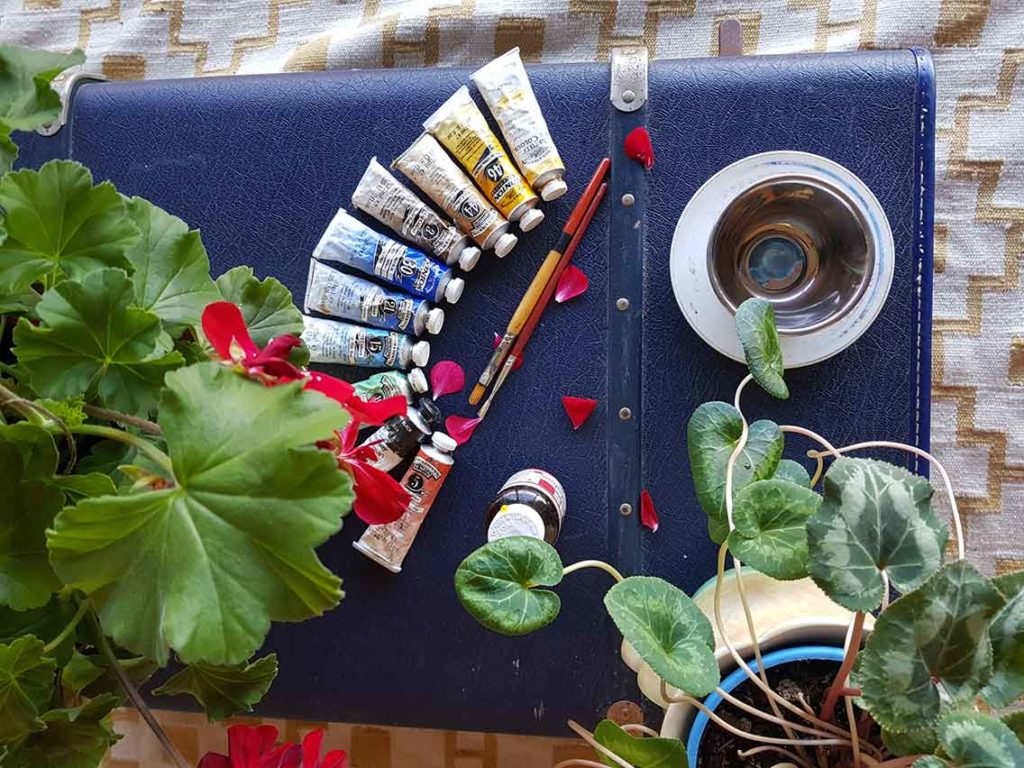
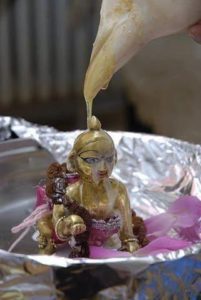
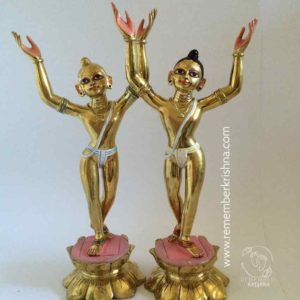
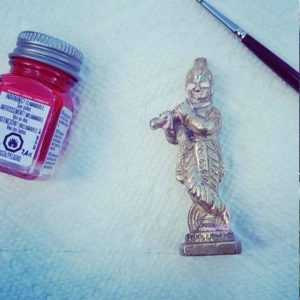
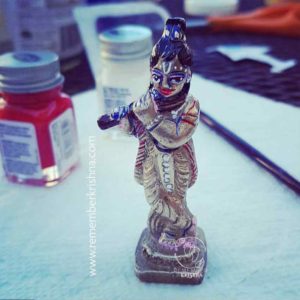
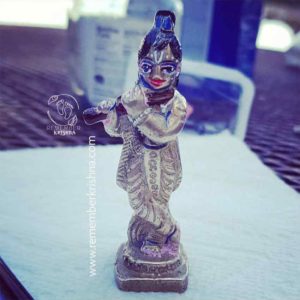
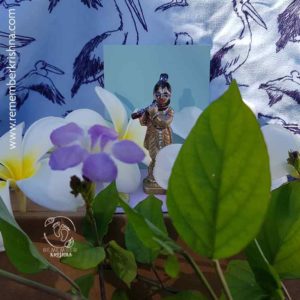 **You may have to hunt around to find where you can purchase mini enamel paints. Try hobby shops, or toy shops often sell enamel paints for model painting. You always have the option of ordering online. You can use the enamel house paints which are available from hardware stores but generally these are sold in larger containers than required, and you can end up spending more than you would need to. I can’t vouch for whether they are stronger or not.
**You may have to hunt around to find where you can purchase mini enamel paints. Try hobby shops, or toy shops often sell enamel paints for model painting. You always have the option of ordering online. You can use the enamel house paints which are available from hardware stores but generally these are sold in larger containers than required, and you can end up spending more than you would need to. I can’t vouch for whether they are stronger or not.